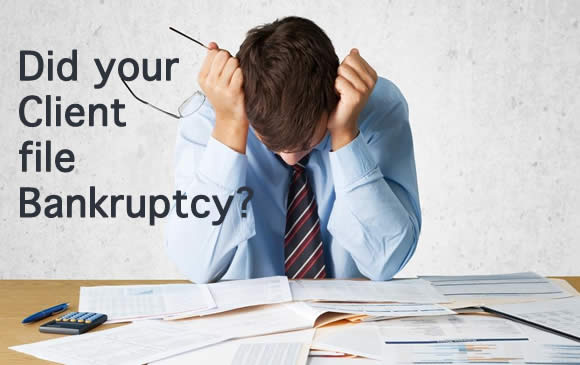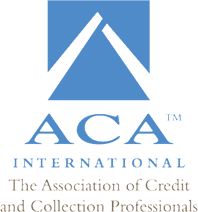As bankruptcy filings have risen over time, don’t get shocked when a letter arrives saying that one of your customers is seeking relief through bankruptcy court to resolve his or her debt issues. The following information will help you understand how to proceed through the debt collection process.
Did your client file bankruptcy?

Types of Bankruptcy
There are three main bankruptcy options your clients may use to seek relief:
- Chapter 11
- Chapter 13
- Chapter 7
Chapter 11 and Chapter 13 filings allow for reorganization. The debtor pays the debt back through a court arranged a repayment plan.
A Chapter 7 bankruptcy filing works differently. In this case, debtors are allowed to start over from scratch as all debts are discharged. Most bankruptcy filings are Chapter 7, making it difficult for you and your business to collect.
You’ll find out which option your debtor has chosen once the filing notices reach your mailbox. The notices tell you the following information:
- bankruptcy type
- date of filing
- court location
- deadline to file a proof of claim
- where & when the first meeting of creditors takes place
- rules governing how to collect
Let’s take a look at where your business goes from here in your attempts to collect the money owed.
- You Must Stop All Contact
Bankruptcy law states that you must stop all collection attempts. This is serious in that you can get sued if you don’t stop in touch with the debtor. You have every right to make contact with the court-appointed trustee or debtor’s lawyer.
- Assess the Situation
Which type of bankruptcy are you dealing? Corporations typically use Chapter 11 filings. Chapter 13 is for sole proprietors and individuals. Both businesses and individuals use Chapter 7.
Chapter 7 allows for creditor distribution when the debtor’s non-exempt property allows for it. Chapter 13 is primarily used when an individual has income that can be used to budget payments in the repayment plan. Chapter 11 and 13 filings allow the debtor relief from immediate payment, so they have time to reorganize and move forward in a better manner.
- File a Proof of Claim
You must file your proof of claim to get in line for repayment. Your opportunity to get paid ends if you miss this deadline.
- The Waiting Game Begins
The type of debt you’re owed plays a large part in whether you get paid back what’s owed to you. On the bankruptcy petition, secured debts are listed on Schedule A and Schedule B, while unsecured debts are listed on Schedule E or Schedule D. Secured debts (such as mortgages) are normally first in line for payment.
- “341” Creditors Meeting
This is the meeting at the courthouse where the debtor, a court-appointed trustee, and creditors meet to discuss the bankruptcy. The debtor must reveal why they’re in this situation.
Creditors now have the opportunity to ask the debtor questions, bring up possible objections regarding the repayment arrangements, or even claim fraud if you believe this to be the case. Of course, you can’t accuse a debtor of fraud unless you have definitive proof.
From here, it’s still a waiting game until you learn exactly how the repayment plan will work. The trustee will send you a final version to review. Once 51% or more of the creditors approve this plan, it goes into action.
Where you stand in line for repayment depends greatly upon the type of debt you’re owed. A secured debt has a better chance of repayment, although it’s usually around 10 cents on the dollar.
As you can see, successfully getting paid back what you’re owed is far from a sure thing. It’s recommended that you take steps to protect yourself up front from getting involved in this type of situation.
One way to help prevent it is to insist that clients pay on time. You might accomplish this by discounting your fees for on-time payments. Your customer may still file bankruptcy at some point, but if you’ve received some early payments because of your discount, you won’t lose as much during the bankruptcy process.
Consider performing routine credit checks when dealing with clients. Pay attention to irregularities in payments. If you notice payments slowing down from a previously on-time client, you might want to think about drawing up a contract about what happens if the late payments go over 60 or 90 days. If the contract is breached, you now have more control. You can sue right away before bankruptcy enters the picture.
We hope these tips about what to do once a client files bankruptcy are helpful. We encourage you to use the tips about how to protect yourself upfront. However, if you find yourself in a situation where you need advice on how to proceed with bankruptcy, we invite you to contact Burt and Associates. We’re here to help ensure that you’re treated fairly and have the best opportunity to recover what’s owed to you.

